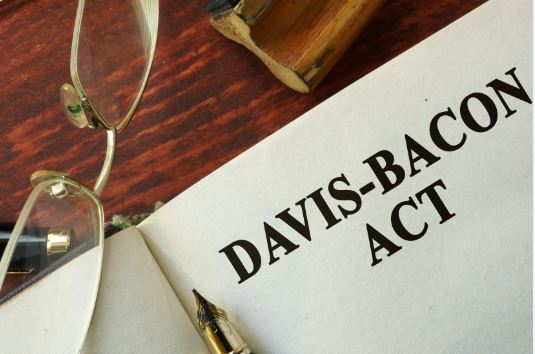Completing Your Workers’ Compensation Audit: A Comprehensive Guide
Introduction:
Workers’ compensation insurance is a vital protection for both employees and employers. It ensures that injured workers receive the necessary medical care and financial support while safeguarding businesses from potentially crippling legal and financial consequences. As part of this process, audits are conducted to determine the accuracy of premiums paid. In this article, we will explore the possibility of being audited on your workers’ compensation policy and outline the essential steps to successfully complete the audit.
Understanding the Audit Process:
One of the key aspects of workers’ compensation audits is to review the payroll and financial records of a business. These audits verify that the correct premiums were paid based on the actual payroll and employee classifications during the policy period. The audit may be conducted by the insurance carrier or outsourced to a professional auditing firm, such as Premium Audit Consultants, Inc.
Preparing for the Audit:
To ensure a smooth and efficient audit process, it is crucial to have all the necessary records ready and organized. These records help validate the accuracy of the premiums paid and can potentially affect the final premium calculation. Here are the essential documents typically required for a workers’ compensation audit:
1. Federal and State Quarterly Payroll Tax Reports:
Provide copies of the Federal 941 forms and State Quarterly Payroll Tax Reports for the relevant quarters of the audit period (e.g., 2nd, 3rd, 4th quarter of 2022 and 1st quarter of 2023). These reports help establish the actual payroll figures and ensure consistency in the audit process.
2. Payroll Summary:
Furnish a comprehensive payroll summary covering the entire policy period (e.g., April 6, 2022, to April 6, 2023). This document should include details of gross wages, overtime wages, and any other relevant payroll information. Ensure that the summary is accurate, complete, and reflects the correct classification of employees.
3. Subcontractor Report:
Include a subcontractor report that shows the total amount paid to each subcontractor during the policy period. This report should include the subcontractor’s name, transaction dates, and payment amounts. It is essential to provide certificates of insurance for the corresponding payment dates to ensure compliance with subcontractor requirements.
4. 1099’s and Contract Labor Payments:
Submit 1099 forms and any other relevant records that document contract labor payments made during the policy period. These documents help identify independent contractors and ensure appropriate classification for premium calculation purposes. Additionally, include a list of employees with their respective job duties to aid in accurate employee classification.
5. Overtime Pay Records:
If your company paid overtime during the policy period, you may be eligible for a credit. Ensure that your records clearly reflect overtime pay separately by employee, including details of the overtime hours worked and corresponding pay amounts.
Conclusion:
Completing an audit on your workers’ compensation policy may seem like a daunting task, but with proper preparation and organization, it can be a smooth and manageable process. By providing accurate and comprehensive records to your insurance carrier or auditing firm, you can help ensure the audit is conducted accurately and fairly. Remember that audits play a vital role in maintaining the integrity of the workers’ compensation system, benefiting both employees and employers alike.
Title: The Crucial Role of Your Broker in Workers’ Compensation Audits: A Story of Lessons Learned
Introduction:
Navigating the complexities of workers’ compensation audits can be a daunting task for any business owner. It is essential to understand the pivotal role your insurance broker plays in this process. In this article, we will delve into a real-life story that highlights the importance of having a proactive broker to guide you through a workers’ compensation audit.
The Audit Request Ignored:
Once upon a time, there was a business owner who received their first workers’ compensation audit request. Overwhelmed by the paperwork and not fully comprehending the significance of the audit, they made the decision to ignore it. Little did they know that this seemingly innocent choice would lead to a series of challenges and financial repercussions.
The Shocking Bill:
As time went on, the business owner received an unexpected bill for a staggering amount of $100,000. It was at this moment that they realized the gravity of their mistake. The audit they had neglected was now demanding their attention in the form of an enormous financial burden.
Seeking Guidance from the Auditor:
Recognizing the urgent need for resolution, the business owner reached out to the third-party workers’ compensation auditor who had conducted the audit. The auditor, understanding the predicament, advised them to consult their insurance broker for assistance. It was through this simple recommendation that the business owner’s journey to rectify the situation began.
The Broker’s Intervention:
The business owner promptly contacted their insurance broker, sharing the distressing news of the exorbitant bill and the overlooked audit request. Realizing the gravity of the situation, the broker immediately sprang into action. They understood that resolving the issue required collaboration with the insurer, AmTrust, with whom the business had a monthly workers’ compensation coverage arrangement.
Advocacy and Negotiation:
The broker took it upon themselves to reopen the audit with AmTrust, diligently representing the business owner’s interests. They engaged in extensive conversations, negotiations, and provided the necessary documentation to support their case. It was a testament to the broker’s expertise and relationships within the industry that they were able to navigate the complex process with finesse.
The Financial Impact:
While the outcome of the audit remained uncertain, it was discovered that the previous year’s audit had resulted in an additional $2,500 payment beyond the initial amount paid. This revelation served as a reminder of the potential financial implications of workers’ compensation audits. However, the broker’s advocacy led to a favorable outcome in this scenario.
Breaking Down the Payments:
With the broker’s guidance, the business owner was able to devise a payment plan for the unexpected financial burden. The $2,500 was divided into four manageable installments, providing the business with much-needed breathing room to stabilize their cash flow while honoring their obligations.
Conclusion:
This real-life story serves as a powerful lesson for business owners about the importance of actively engaging with workers’ compensation audits and recognizing the crucial role their insurance broker plays. Ignoring audit requests can lead to significant financial repercussions. By partnering with a proactive broker, businesses can navigate audits more effectively, avoid costly surprises, and ensure compliance with workers’ compensation requirements.







